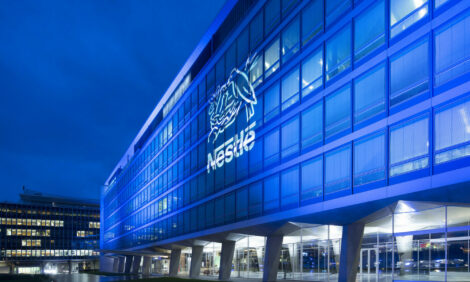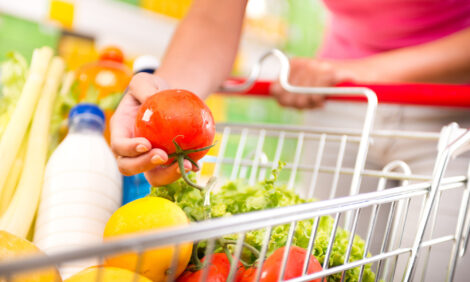



Weekly Australian Cattle Summary
AUSTRALIA - This report is a collection of weekly cattle price summaries from each Australian state by the Meat & Livestock Australia.
Victoria
Numbers increase
Returning to a full working week following the Friday Anzac day holiday, cattle numbers at MLA’s NLRS reported centres rose by 18%. Despite this, there were reduced pennings in the Western Districts and Gippsland regions. With the final month of autumn, and conditions becoming cooler, even the odd frost has poked its head out in northern areas, which was not all that well received at all following some good rains over last weekend. This will in all probability lower the supply of better quality well finished cattle of all categories right through-out the state especially going into the winter months. There remains an even spilt between heifers and steers, both in the vealer and yearling portion, although there have been more heifers sold off this year than there was during the first four months of 2007.
Most of the remaining supplementary and grain fed cattle are likely to become scarcer, and local butchers in several regions will need to source older cattle for their requirements, even so in the past few weeks this has already happened in some parts of the state. Over recent weeks, the better quality cattle have distanced their poorer quality counterparts for price. This factor became more evident as a number of very poor quality young cattle sold well below 100c/kg. In comparison most well bred and finished young cattle sold at price rates generally between 180c to 220c/kg. Older cattle prices have varied but lately seem to be stabilising to a more consistent price rate.
Quality sells best
Demand for steer vealers averaged 9c to 10c for the top B muscles, but the heifer portion averaged cheaper, most made between 186c to 237c/kg. The C3 steer vealers averaged 185c and heifers sold for 165c to 175c/kg. The best B2 yearling steers made to a top of 225c/kg. The C3 indicator averaged around 176c/kg. Yearling heifers made to a top of 210c with the C3 indicator averaging close to 165c, which was 1c to 5c/kg dearer.The C3 and 4 score heavy grown steers averaged 6c to 8c dearer making from 151c to 181c, with the C4’s averaging 172c, to be 6c/kg dearer. The C4 bullocks averaged 6c dearer, at 148c to 177c/kg. The extra heavy bullocks made 157c to 162c/kg for the 4 and 5 scores. Older grown heifers generally sold to stronger demand both from trade and export buyers with most categories improving by 2c to 8c/kg across the weeks trading.
Cow prices again were inconsistent over the week. Light 1 and 2 scores up to 400kg ranged from 3c cheaper to 6c dearer, at 70c to 122c/kg. Heavy 3 and 4 score beef cows made from 114c to 156c, with most unchanged to 4c/kg dearer. Heavy Friesian cows sold for 106c to 142c, a rise of 4c to 8c/kg. Most beef cows averaged between 260c and 280c/kg cwt.
New South Wales
Quality and numbers decline
A burst of cold weather early in the week, accompanied by some useful rain in some areas, had a marked impact on a number of selling centres. Consignments were substantially reduced at most sales but the recent drop in stock quality was more pronounced as the impact of deteriorating pasture and colder temperatures takes hold in most regions. Falls of 10mm to 20mm and up to 30mm in more favoured districts will give producers some optimism that a substantial seasonal break can occur before the depth of winter sets in but useful pasture and crop growth is still some weeks away in most areas. The quality and composition of yardings this week indicate most producers are not overly confident of being able to fatten stock before next spring. Hence, light and under-finished young cattle were prevalent in generally smaller offerings.The total number at NLRS reported centres was 15,094 head. Wagga, Gunnedah and Tamworth had had significant reductions of 1170, 843 and 638 head respectively. The notable exceptions were the Thursday sales of Dubbo and Armidale which had smaller yardings last week due to the ANZAC holiday on Friday. Most centres yarded ample 2 score young cattle suitable for feeders and restockers and a number reported reduced finish and yield in those cattle bought by the trade.
The scarcity of heavy steers and bullocks at auction centres was again pronounced. Only Casino reported good quality and supply with all other centres yarding limited numbers of mainly plainer quality. Prices generally eased by around 5c/kg. A better selection of cows managed to hold rates in most cases.
Market struggles
Despite lower numbers at most centres, prices generally eased across most descriptions. Restockers were strong on the best vealer steers, helping push the average price across all sales for medium weight C2s up 7c to an average of 184c after reaching 205c/kg. Most of the heavier vealer steers also went to restockers but medium weights slipped 2c to average 178c/kg. The few bought by the trade were slightly dearer, ranging from 160c to 197c/kg. Light and medium weight yearling steers to restock were firm to 2c cheaper, most making 160c to 167c/kg. The 2 score medium weight feeder steers were 2c cheaper at an average of 160c, however the 3 score pens averaged 10c dearer at 171c/kg. Heavy weight yearling steers to the trade lifted 3c to average 168c after reaching 191c/kg. Yearling heifers were mainly easier to feeders and restockers but the medium and heavy weights to processors were 5c to 6c dearer, reaching 194c to average 162c/kg.Grown steers met weaker competition for most categories although quality was generally plainer. Best heavyweights made from 150c to 175c/kg. Grown heifers were slightly dearer, reaching 169c to average 144c/kg. Cow prices varied between weight categories with medium and heavy weights firm to 2c/kg cheaper. Most made from 115c to 145c/kg. Lighter weights were around 10c/kg dearer.
Queensland
Colder weather affects yield
The continuing dry weather combined with colder temperatures is showing in the quality of the cattle being offered. While some centres recorded small increases in supply, overall at physical markets covered by MLA’s NLRS numbers fell by 22%.Markets early in the week saw cows suffer further price reductions of 3¢ to 6¢/kg. Values for steers and bullocks struggled at times, nevertheless average prices achieved were close to firm. Apart from a few selected lines the majority of young cattle met a cheaper trend, with a small slip in quality resulting in a big fall in value.
With winter almost upon us and frosts already reported in low-lying districts, is reflected in the quality of most cattle. Calves and vealers are the most noticeable as cows start to dry off in milk supply, and this in turn is lowering yield.
At Dalby the slide in cow prices experienced recently came to a halt with rises of 2¢ to 3¢/kg. Steers and bullocks also showed a small price improvement, with a larger number of good heavy bullocks penned. There was a wide variation in the quality of the young cattle and prices fluctuated accordingly, nevertheless apart from secondary grades there was a general upward trend in the market. Calves to restockers were dearer and a large selection of vealer heifers attracted stronger competition from the trade to lift in value by over 10¢/kg. Restocker categories of yearling steers sold to better competition and feeder classes also enjoyed a stronger market however feedlot operators were selective.
A dearer trend
A small number of calves sold to the trade at 168¢, and the largest numbers returned to the paddock around 189¢, with a few sales to 214.2¢/kg. A fair sample of vealers steers sold to restockers at an average of 194¢ with some to 204.2¢/kg. Vealer heifers to the trade averaged 9¢ dearer at 163¢, while butchers at Warwick had to pay up to 209.2¢ for the very small selection of better grades. Lightweight yearling steers to restockers and feeder operators showed improvements with feeders at 162¢ and restockers just under 180¢/kg. Yearling heifers in the D2 range were in the largest numbers and improved 5¢ to average 138¢/kg. Slaughter categories gained 2¢ to 9¢ to average in the high 150¢/kg range, the occasional B muscle line reaching 207.6¢/kg.Medium weight grown steers to feed experienced a lift of 6¢ and sold from 151¢ to 169.2¢/kg. Heavy steers suited to the export slaughter market averaged 3¢ dearer at 169¢/kg. A larger supply of good heavy bullocks also improved 3¢ to average 171¢ the very occasional sale to 183.6¢/kg. Medium weight score 2 cows averaged 108¢ with the largest numbers of score 3s at 118¢/kg. Good heavy cows generally sold at 134¢ with some old stud cows reaching 149.6¢/kg.
South Australia
Numbers up despite rain
Despite some useful rainfall in some regions over the weekend, it was surprising that the SA LE yarding increased as did Naracoorte and Mt. Gambier. Millicent after a fortnight’s break was the only market to fall.While quality improved at the SA LE there was also strong competition from the usual buying fraternity, with the addition of two Victorian buyers adding to the mix at generally dearer levels. There was also several large drafts of pastoral cattle offered that attracted feeder activity for both steers and heifers. Feeder orders also sourced well bred 2 and 3 score lightweight steers at dearer levels, while local butchers and wholesalers pursued a better selection of vealers that suited their requirements.
Grown steer numbers while remaining low in the Lower South East increased slightly. Producers seem to be waiting for physical market prices to rise consistently above the 170¢/kg mark before yarding large numbers again. However, there is still some thought that there may not be that many left when producers have opted to chase the feedlot prices.
Naracoorte’s and Mt. Gambier’s quality slipped, although like the SA LE sale any stock showing the desired finish were keenly pursued by wholesalers and processors at mainly dearer levels. Feeders and restockers were again active over a wide range of weights and quality. Cow prices were generally dearer with some excellent quality EU accredited beef cows selling to a peak of 158¢/kg.
Good quality dearer
Only a small number of vealer steers finished with the trade, while the greatest percentage sourced by feeder and restocker orders. The wide range of quality offered led to a wide spread of prices mainly between 150¢ and 187¢ to feeders and restockers, and up to 223¢/kg to the trade. This left most sales ranging around 9¢/kg either side of unchanged. Vealer heifers followed a similar pattern as most attracted prices between 140¢ and 192¢, with isolated B-muscled sales to 225¢, at rates ranging from 2c to 8c cheaper, up to 3¢ to 11c/kg dearer. Most yearling steers were 3¢ to 18¢ dearer as feeders and the trade vied to source a wide range of quality mainly between 150¢ and 188¢/kg. Yearling heifers were also keenly sourced by wholesalers for their better finish as most attracted prices between 142¢ and 192c¢, with feeder and restocker purchases stretched out from 74¢ for pastoral heifers, up to 175c/kg for C2 medium weights.Grown steer and bullock prices were 1¢ to 7¢ dearer as C3 and C4 sales ranged mainly between 168¢ and 178¢/kg. Cow prices were dearer for heavy beef cows, while being 2¢/kg cheaper for 1 and 2 score dairy cows.
TheCattleSite News Desk


